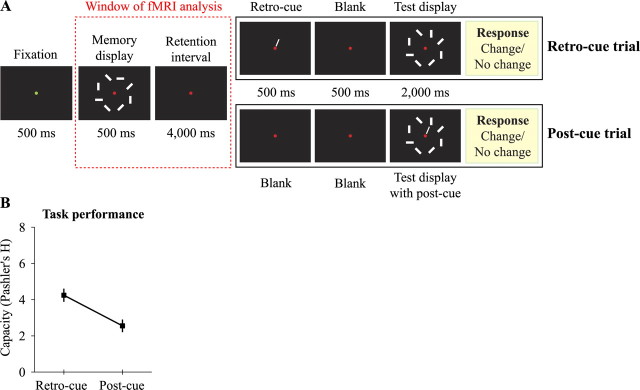Figure 1.
Trial design and task performance. A, Observers performed a VSTM task while cues were presented before the test display appeared (retro-cue trial) or during the test display (post-cue trial). Performance on post-cue trials reflects the capacity of strong VSTM, and the increase in performance on retro-cue trials reflects the capacity of weak VSTM. BOLD-fMRI was analyzed up to the delivery of the earliest cue (indicated as the red dotted rectangle). Up to that time point, trials are identical, but differences in subsequent cue delivery and the response of the subject reveals the perceptual status of the cued item during retention. B, Task performance on both kinds of trials is depicted as Pashler's H (Pashler, 1988). Plotted data are the mean ± SE performance across subjects.

